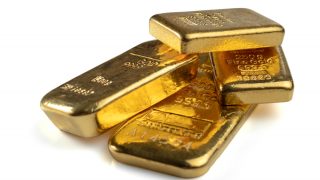So far in this series, I have shared the first nine of 10 questions that you should answer before you decide whether or not to buy a share of stock in a particular company. The gist of these 10 questions is to help you understand the company you are investing in and items to pay attention to when sizing up what’s on the horizon, both good and bad. After all, how do you know how to gauge a company’s business and the competitive landscape if you don’t have a firm understanding of what the company does and how it makes money for itself and its shareholders? These are some of the tools I use each time I look at a new opportunity that I may share with subscribers to my Growth & Dividend Report newsletter.
If you missed that guidance, I encourage you to check out my previous columns: part 1, part 2, part 3, part 4 and part 5. These tackle the first nine questions:
- What does the company do?
- What are its key products or services?
- At what business unit or units does the company make most of its profits?
- Who are the key competitors and how are they impacting the market?
- What is driving growth at the company?
- What is driving the company’s profit picture and, if it’s not improving, why is that?
- What does the company’s balance sheet look like?
- What valuation metrics are key?
- What catalysts could drive the shares higher?
The last question — number 10 — pulls from the first nine questions and is the culmination of all the hard work you’ve done so far. That’s right, the 10th question is:
- “What do I do?”
Or at least that is one way to ask the question. I would argue a better way is to ask the following: “Is there enough upside in the shares less the potential downside to warrant buying the shares at current levels?”
You might say there are some subtle distinctions in the wording, and that was intentional. One of the common mistakes I find is that investors are too often wooed by the promise of alluring upside and forget the dark side of potentially losing money when investing. You can’t be afraid to weigh the risks. As the last few days have shown us, pullbacks are going to happen. If you’re going to be an investor — individual or professional — you have to manage your risk and one way to that is to limit your downside.
In part 5, I talked about the catalyst of falling coffee prices and the positive impact on several companies, including Starbucks (SBUX). In keeping with question 10, we are asking the following — after falling 13.4% over the last few weeks amid the market pullback, are Starbucks shares at an attractive entry point?
Let’s take a deeper look.
In addition to enjoying falling wholesale-coffee costs, Starbucks has also improved its food menu during the last year and is beginning to pick up the pace of its wine and beer offerings. The company is in the process of adding alcohol sales to 24 locations. Granted, that’s a small number compared to Starbucks’ total base of stores, but let’s remember that the chain’s La Boulange menu rolled out in a rather disciplined fashion as well.
According to USA Today, Starbucks in recent months has submitted liquor license applications for “several hundred more locations throughout the country,” which tells me that SBUX is as serious about adding alcohol as it was when it expanded its food menu in a big way. (If you hadn’t noticed, Starbucks now offers a full line of sandwiches, salads and other things that are probably taking a bite out of sales at McDonald’s.)
Pairing food with coffee, tea and various other beverages was pretty much a no-brainer for the chain. But getting people to see Starbucks as a place to go for alcoholic drinks could be a little more daunting nationally than it was at Washington’s Dulles International Airport, one of the initial locations where Starbucks offered adult beverages.
Don’t get me wrong, I love the idea of getting beer or wine at Starbucks. It just remains to be seen whether the “If You Build It They Will Come” idea will work in this case.
And while there likely will be several commonalities between the company’s alcohol initiative and its food-expansion one, both have occurred during a period of falling coffee prices, which is continuing today.
| Starbucks Corp. (SBUX) – Risk-to-Reward Analysis | |||||||||
| Earnings | Share Price | P/E Ratio | Annual | Dividend Yield | |||||
| Per Share | High | Low | High | Low | Dividend | High | Low | ||
| 2011 | $0.76 | $22.17 | $15.86 | 29.1 | 20.8 | $0.30 | 1.35% | 1.89% | |
| 2012 | $0.89 | $30.84 | $21.96 | 34.7 | 24.7 | $0.38 | 1.23% | 1.73% | |
| 2013 | $1.10 | $40.73 | $27.08 | 37.1 | 24.7 | $0.46 | 1.13% | 1.70% | |
| 2014 | $1.34 | $41.78 | $34.36 | 31.2 | 25.7 | $0.55 | 1.32% | 1.60% | |
| 2015E | $1.58 | $59.32 | $39.90 | 37.4 | 25.2 | $0.64 | 1.08% | 1.60% | |
| 2016E | $1.87 | $59.32 | $39.90 | 31.7 | 21.3 | $0.80 | 1.35% | 2.01% | |
| Average | 33.5 | 23.7 | 1.24% | 1.76% | |||||
| Maximum | 37.1 | 25.7 | 1.35% | 1.89% | |||||
| Minimum | 29.1 | 20.8 | 1.08% | 1.60% | |||||
| Implied Share Value using Expected 2016 Earnings | |||||||||
| P/E Derived | Dividend Derived | ||||||||
| High | Low | High | Low | ||||||
| Average | $62.81 | $44.43 | $64.35 | $45.58 | |||||
| Maximum | $69.52 | $48.09 | $59.12 | $42.29 | |||||
| Minimum | $54.45 | $38.95 | $74.15 | $49.88 | |||||
| Current SBUX Share Price | $51.09 | $48.00 | $51.09 | $48.00 | |||||
| Upside | 22.9% | 31% | 26.0% | 34.1% | |||||
| Downside | -13% | -7% | -10.8% | -5.0% | |||||
| Net Upside | 9.9% | 23.4% | 15.2% | 29.0% | |||||
| Source: Company reports and Bloomberg.SBUX share prices as of August 25, 2015 | |||||||||
During the second half of 2012 and into 2013, these factors gave Starbucks an earnings cushion relative to analysts’ expectations. We also saw a hefty (and now-rare) pullback in SBUX shares, which dropped to around $22 in August 2012 from $30 that April. That proved to be a compelling entry point for the stock at 23.4x 2012 earnings.So… back to our question — in recent weeks, SBUX shares have fallen from a high of $59 to a flash bottom of $43 when the Dow Jones Industrial Average opened down 1,000 points this past Monday before settling at the current $51.
But today, Starbucks shares are trading at 27x expected 2016 earnings of $1.87 per share. That’s a few points above the average multiple of 23.7 when Starbucks shares bottomed over the 2011-2015 period, but a nearly 20% discount to the average price-to-earnings multiple at which the shares have peaked during the 2011-2015 time frame.
Applying those average peak and trough multiples to the Wall Street forecasted earnings per share (EPS) derives an upside price target of almost $63 and a downside price target of $44.50 for SBUX shares. Some quick sandbox math shows that’s 33.5% in potential upside vs. potential downside of 10%, or 23.5% net upside. Add in the company’s current dividend yield of 1.2% and that equates to 25% net upside over the coming five quarters.
But that’s using just one valuation metric that we talked about in question 8. As I mentioned in my question 8 discussion, you can have much more confidence in your upside and downside price targets if you triangulate them using more than one valuation metric. In this case, let’s look at Starbucks’ dividend yield. Over the same time frame, SBUX shares have peaked at a dividend yield of 1.2% and bottomed out at 1.7%.
Before we do some quick calculations, we have to account for Starbucks shaping up to be what I call a dividend dynamo company — one that increases its dividends every year. It has been doing just that since it paid its first quarterly dividend of $0.05 per share in 2010. For the last several years, it has raised that quarterly payment to $0.16 per share. The average annual dividend increase over the last few years equates to 21% per year, with the most recent dividend increase clocking in at 16.4%.
Do we know Starbucks will increase its dividend in 2016? I am not sure. But for valuation purposes, as well as the company’s shared intention to return capital to shareholders, let’s model a 10% dividend increase in 2016 to $0.74 per share.
Applying the average peak and trough dividend yields to our forecasted 2016 dividend yield implies potential upside to $60 and potential downside to roughly $42.50. From a percentage basis vs. the current share price, that is up 17% and down 17%, which means when using this metric, the upside is equal to the downside.
Let’s adjust our question. Based on the dividend yield analysis, ask: at what price level does Starbucks have at least a net 20% upside? It looks to be around $46.50 or so. Even if we’re too conservative on our 2016 dividend increase, it still looks like net upside of more than 20% would exist if the shares dipped closer to $49.
One last final check shows that on 2016 expectations, Starbucks shares are trading at a 22% premium to those for its closest competitor, Dunkin’ Brands (DNKN). That’s the upper end of the premium range SBUX has traded at since Dunkin’ became a public company. Barring any dramatic upward revision in earnings expectations for SBUX shares it likely means the company’s upside is limited from current levels.
Putting all three tools to work suggests we are better off waiting for SBUX shares to fall closer to $49 before getting involved.
One of the lessons to be learned through the answers found in this question is that a pullback in a stock may be tempting, but it may not give you the sufficient risk-to-reward tradeoff needed to warrant adding the shares to your holdings.
The bottom line is this — after answering all of the 10 questions, it is possible that you will not buy the shares of whichever company you’ve put all this work into. That’s okay, because when you’re done, you will have a much better understanding of the company, its business, how it trades, what will move the stock and at what levels buying it offers a better-than-favorable risk-to-reward tradeoff. Always be disciplined and don’t fall in love with a company’s shares just because you happen to enjoy the company’s product rather immensely. That’s another big mistake I’ve seen investors make — becoming emotional over the shares they own.
If you follow these 10 questions, they should help you sleep better at night as you invest.
In case you missed it, I encourage you to read my e-letter column from last week, which detailed the ninth question on our list of 10 questions to answer before you buy any stock. I also invite you to comment in the space provided below my Eagle Daily Investor commentary.
Upcoming Appearances
- Each Monday, I join Sonoma County’s Morning News with Melanie Morgan’s “Big Story” of the week to talk about the latest in the economy, stock market and more.
- Each Friday, I join Matt Ray, the host of America’s Morning News, to talk about the latest on the economy, stock market and more. With the show broadcast in more than 170 markets, be sure to tune in.
- Each Friday, I join Sam Sorbo, host of The Sam Sorbo Show, to share my latest thoughts and insights on stock market, economy and more. You can listen to our conversation here.




